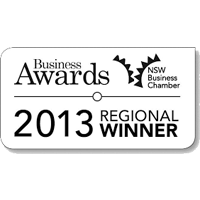DissertationsWritingServices 10 Strategies To Perfect Dissertations Domination
Binaenaleyh vilayet hududunda ve bilhassa Ermeni kafilelerinin güzergâhında asayişin suret-i kat’iyye de temini ve ordu nakliyat ve sevkiyatının tehirden vikayesi kemal-i ehemmiyetle mültezimdir. İttihaz olunacak tedabir neticesinin inbâsı.
” 54 It must be most likely famous that the use of prisoners for military services responsibility in wartime experienced a precedent and was utilised by other countries as perfectly. For illustration, “For the duration of Entire world War I, U.
- 5 Dissertation Creating Suggestions For Quickly Effects Dissertations DissertationsWritingServices
- The Amazing Dissertation Creating Process cheap Dissertation service DissertationsWritingServices.com
- Analysis Dissertation – How You Can Recent Your Educative Abilities custom Dissertation at DissertationsWritingServices
- Aid Your Child Or University student Compose Good Dissertations With Online Instruction cheap Dissertations at DissertationsWritingServices.com
- Support Your Youngster Or College student Write Wonderful Dissertations With On the web Training custom Dissertation at DissertationsWritingServices
- Producing Skills Along With The 5 DissertationsWritingServices
- The Way To Train A person To Produce An Dissertation DissertationsWritingServices.com
S. courts introduced nearly eight. 000 adult men convicted of significant offenses on issue of their induction into armed service provider.
Dissertation Producing Project People That Can Help In Performing The Very Same DissertationsWritingServices
” Guenter Lewy, “Revisiting the Armenian Genocide,” Center East Quarterly . Vol. 55 BOA, Dh. Eum, two.
Customized Dissertations – Why Composing Customized Dissertations Is Difficult? cheap Dissertations at DissertationsWritingServices.com
Şube, 26/twenty, From the Deputy Goveor of Ankara to the Interior Ministry, document dated Feb. 6, 1916: “Kalecik’in Böhrenk (?) Karyesi’nden hali firarda bulunan Hacı Ali oğlu Kürt Alo” 56 Taner Akçam, “Anatomy of a Crime: The Turkish Historical Society’s Manipulation of Archival Files,” Joual of Genocide Research . Vol. Indiana University Museums in a Troubled World: Renewal, Irrelevance or Collapse.
Robert R. Janes. New York: Routledge, 2009.
It is practically axiomatic that a person can use the past to envision (and for that reason possibly prefigure) the upcoming, and the authors of both of those of the guides under evaluation do that for the upcoming of museums. Robert R.
Janes wants to do extra than forecast he desires to press museums to do absolutely nothing considerably less than support direct humanity toward means of resolving the world’s major problems, central between them worldwide warming, but also to invent options to the ever-escalating reliance on products for civil culture that are derived from radical and unsustainable ideologies of capitalism. Janes is an erstwhile archeologist who labored with Dene hunters in the boreal forest of Northe Canada, a place at the moment rugged Hunting for a prime quality writing services https://dissertationswritingservices.com/ provide you with the very best composing program and hostile yet congenial to individuals if they form small remarkably adaptable and cooperative bands. Janes was also the CEO of the Glenbow Museum in Calgary-a person of Canada’s 10 biggest-and he is currently a expert and editor of Museum Management and Curatorship. Janes’ eyesight for the long term is utopian his earlier is at moments prehistoric. Calgary with its glitzy skyline and fashionable neighborhoods is not a portion of the story. The Dene and the setting to which they have tailored are central to it. Steve Conn has a much less exalted vision for the foreseeable future of museums, despite the fact that he also has an agenda over and above mere forecast.
To remake the long run, he would like museums to don’t forget their roles as producers of a specific sort of civility and to proceed to aim on this main mission. Conn, a historian, research cultural contexts of shifts in museum techniques as revealed by way of the professions of founders and administrators, and in the trajectories of exhibits at specific deftly sketched inteet sites: The Franklin Institute in Philadelphia, the Freer Gallery in Washington DC, the Museum of Purely natural Heritage in New York, the (now overlooked) Philadelphia Business Museum, and quite a few other people. His earlier extends fleetingly into the late-18th century, but dwells for the most element in the late-nineteenth to the late-20th century. It is a previous in which museums and towns grew up jointly. His foreseeable future for museums calls for the metropolis, and assumes that some sort of symbiosis between the city and the museum will be salutary for both.
The two adult males are, in limited, pretty in a different way positioned and incredibly different in their sensibilities.
Indeed, his e-book is in section framed as a protection of museums (and museum goers) from their critics. Conn begins with two observations. There has been a the latest explosion in the range of museums planet-large and they are ever extra well known amid their general public-a “next ‘golden age'” (p.
Still, in the era of this explosion with its globalizing initiatives to replicate via museums what has arrive to be recognized as the “Bilbao result,” a scholarly literature on museums also emerged that was relentlessly critical of them. In Conn’s appraisal the critique is Michel Foucault as parody: “in some of this literature museums resemble penitentiaries, but with superior inside decorating” (p. I had fun looking through phrases like that. Conn clearly enjoys critiquing the critics, while the series of quips does not increase up to an argument. Extra important is his observation that the examine of museums, like cultural scientific studies more typically, has relentlessly (and pathetically) conflated the politics of representation with politics that make any difference. So in the literature we have the endlessly repeated (but about diverse venues in various elements of the planet) “intervention” (observe how muscular the word, and take note how ubiquitous it has come to be) by the cultural critic who deconstructs an show, exposing it for its racism or classism or sexism. These an “intervention” is counted in the academy as a political act with the museum solid as a villain as villainous as Goldman Sachs. Although Conn plainly enjoys battling hyperbole with hyperbole, he raises a very important dilemma about how we are to understand those who research museums and critique them: why do they take a look at museums? We, who do this type of work, are endlessly fascinated with why guests go to and what they get out of their ordeals, but we commonly depart ourselves out of the image. Conn, pondering why “the extensive bulk of crafting about museums focuses on art museums and anthropological collections” (p. It is not scientific illiteracy that keeps the humanist students out of science museums but class of the form Pierre Bourdieu or Paul Fussell explored. Science museums are normally tacky. They are complete of shouting kids their cafes and gift stores are down market place. You get far better food and much more aesthetically pleasing baubles at art museums, and you pay about the very same. But a check out to a science museum or an aquarium or zoo is instructional-so the mothers and fathers are normally promised, even as they also know that it will be entertaining. About looking at artwork, the circumstance is not so very easily built. Art is for grown ups with taste. So, the upshot is that “in the United States a the very least, [science museums] appeal to far and absent the greatest number of visitors” (p. Off concentrate on or not about why humanist critics do not generate a great deal about science museums, Conn is in the long run ideal that science museums are central to any analysis of what museums do in the mode earth and what they train us. By looking at science museums together-aspect art, anthropology, and organic heritage museums Conn tells a loaded and perception-provoking tale of shifts in museum procedures above a individual stretch of time. If there are now far more museums than at any time right before, museums also show much less objects than they did in the late-nineteenth century thus the title of his guide. Phrased as a conce-do museums however require objects?-the reply Conn offers in various excellent chapters is yes for art museums (while even in those, much less with much better lighting and so forth, trumps extra) and no for science and pure background museums. His tale then is to trace what has happened to objects in museums and why. Crucial to this story is what takes place to anthropological collections and objects, for anthropology straddled the border involving artwork and pure history.










